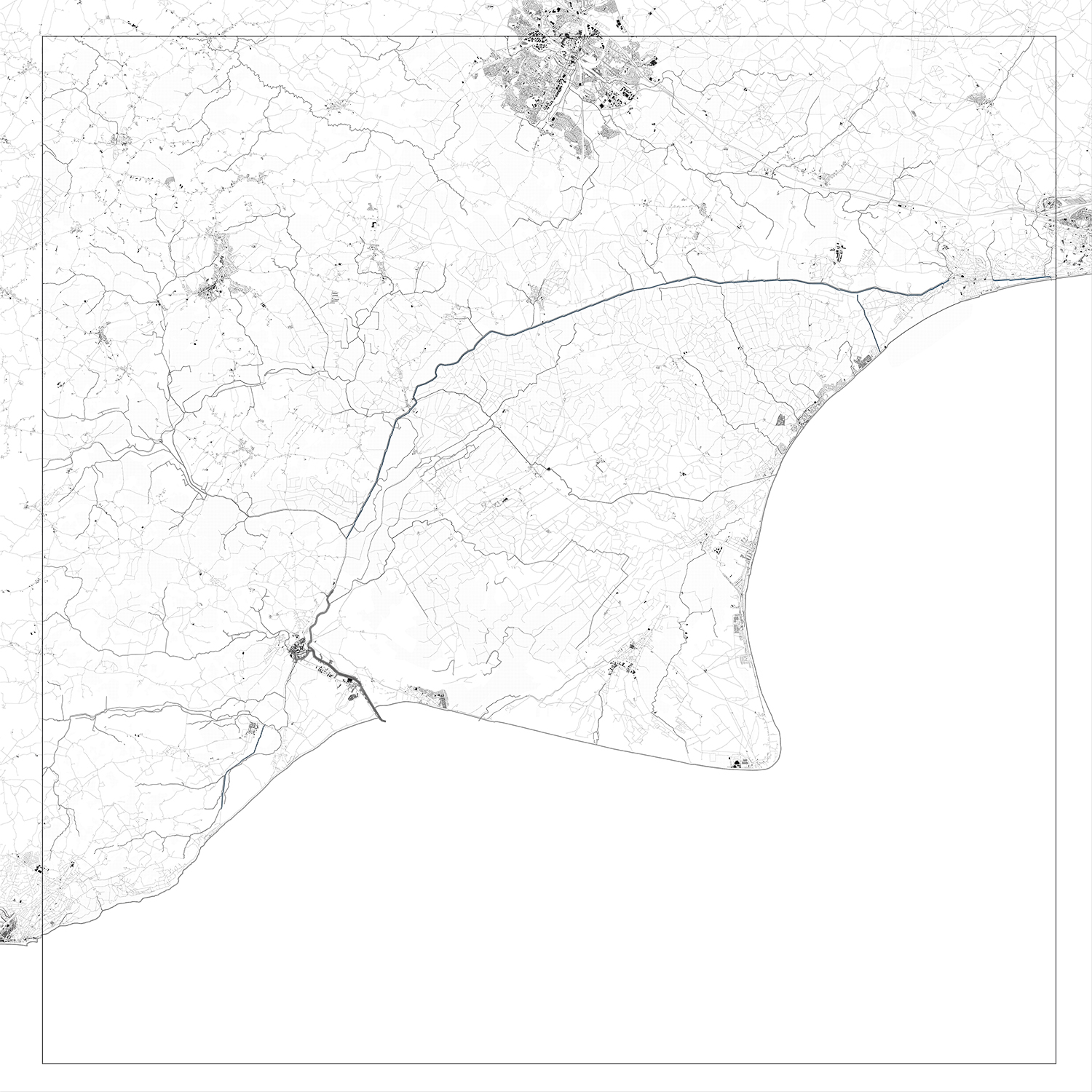Air, Architecture + Other Climates
[50.9193° : Climate Futures] - 21/22
John Cook, Ben Pollock + Laura Nica
![Dungeness B Power Station and surrounding landscape. Image: Stan Platford, "Visible Signs Of Power and Communication"]()

About
|
The context of our global climate and ecological emergency
provides the foundation for all DS18 investigations. This year, the studio
continued its wider framing and explorations through the lens of air,
considering its role as the vehicle of energies, moistures and toxins, whilst
imagining ways that architecture could shape, be shaped by, or integrate
within this invisible globally circulating matter. For the concluding year of
these atmospheric studies however, we applied our developed learnings, research
and design methodologies through a detailed, critical and urgent place-based
investigation. Remaining within the UK at this highly critical juncture, we
turned our focus upon the southern coastal headland of Dungeness. This unique and precarious region presents a microcosm of the physical, socio-economic and ecological conflicts that climate degradation presents within the UK and beyond. Internationally recognised for its remarkable morphological formations, ranging biodiversity and climatic extremes, the local economy is centred and sustained around the Nuclear Power Station, Dungeness B, now entering its final decommissioning phase. Amongst all this, according to even the most conservative projections, this once productive and environmentally critical landscape could be decimated or entirely lost before the end of this century through the impacts of climate change and sea level rise. As this coastal community braces for a future of uncertainty, it is here we initiated our investigations. Drawing on concepts of Carbon to ClimateForm, new socio-economic frameworks towards a Green New Deal, and the more radical ideals of Degrowth, we situated our investigations amongst the contradictions and connections between environment and economics, the natural and the managed, between habitats, industries, humanity and climate. What possible futures could this entail for this coastal community, its ecologies, human and non-human inhabitants? Ones of retreat, defence or adaptation? And through this impending environmental collapse, could their recoveries birth new collective typologies and public infrastructures based upon a responsibility towards our planetary limits, a just and non-extractive energy balance, or even a collaborative replenishment of our global commons? |
2020-2021: Carbon Transitions, UK
2019-2020: +Other Climates, Norway
Site

Students
Year 1
Kirsten DavisChada Elalami
Carl Fletcher
Georgios Malliaropoulos
Vilde Bakkeli Sand
Guy Sinclair
Yuechuan Xi
Year 2
Arvindaa BalamuruganGary Chan
Daria-Suzanne Donovetsky
Justyna Lesny
Muhtasim Mojnu
Sulman Shaikh Muhammad
Nicholas Tsangaris
Guest Critic
Constantina Avraamides (CA Architecture)
Raul Bielsa (Prior+ Partners/ AAVS Transborder)
Roberto Bottazzi (UCL)
Lindsay Bremner (Monsoon Assemblages)
Finbar Charleson (dRMM + AA Wood Lab)
Emma Colthurst (University of Greenwich)
Katie Dechow (Jo Cowen Architects)
Fraser Morrison (Future Fields/ Architecture 00)
Christina Nan (Future Fields/TU/e)
Justin Nicholls (Fathom Architects)
Iulia Stefan (AA Ground Lab)
Rachel Wakelin (Buckley Grey Yeoman)
Izabela Wieczorek (Atmospheric Architecture Agency/ Reading University)
Oscar Villareal (Lab 10 MX/ ecoLogicStudio)
Francois Girardin (UoW)
William McLean (UOW)
Anthony Boulanger (UoW)